
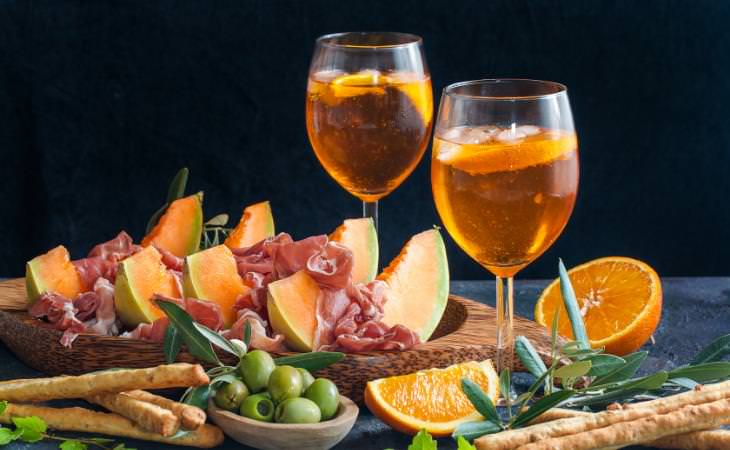

Popular digestifs are fortified wines (sweet sherry, port), brandies (cognac, grappa), bitter liqueurs (Chartreuse, Sambuca), or other distilled liquors (ouzo, limoncello).
Let's finish off with some recommendations by Mike Baquette from the Urban Grape:
H/T: TasteFrance

Comparing Popular Alcoholic Drinks: Health Risks and Benefits
This article compares beer, wine, whiskey, vodka, rum, tequila, and gin, analyzing their alcohol content, effects on the body, health risks, and potential benefits.

This 10-Minute Read Will Make You a Bourbon Expert
Are you unsure of the difference between whiskey, bourbon, and scotch? We are here to clarify.

Why Alcohol Can Raise Your Risk of Getting the Coronavirus
Excessive drinking, even occasionally, is the major culprit that can make a dent in your immune protection and raise your risk of becoming sick.

4 Christmas Cocktail Recipes to Make This Holiday Special
These amazing Christmas cocktail recipes will ensure that you make this a Christmas to remember. Read how to make them now and give them a try!

Delicious Drinks Perfect to Keep You Cool This Summer
Summer is here and the best way to beat the heat is with these cold cocktails, jam-packed with tasty fruits to keep you energized.
 3:32
3:32
Is Expensive Wine Really Better Than The Cheaper Variety?
Does price have to do anything with how tasty a bottle of wine really is? Find out in this video, we were surprised to hear the answer.

Freeze These 13 Foods to Improve Their Taste
Did you know that these foods taste even better after freezing? Since your freezer is always on, you might as well make good use of these delicious tips!

4 Heavenly Chicken Soups to Spoil Yourself with This Winter
Chicken is a common soup ingredient because of its ideal tenderness and taste. Presenting 4 of the many irresistible ways to make the chicken soup of your dreams.

These Simple Recipes Will Make Use of Your Instant Pot
True to its name, this new invention can make a variety of meals instantly. But if you're feeling intimidated about what to prepare, fear not, we've got 4 simple recipes for you to try.

Pickle-licious! 10 Recipes You Just Can't Miss!
Some types of food can be so boring. With these 10 recipes and tips, you'll find the best 'pickled' recipes for your favorite foods.

Three Terrific Recipes for Tasty and Healthy Root Vegetables
The following three recipes will teach you how to utilize lesser-known parts of a variety of wonderful root vegetables, earning you plenty of compliments and praise.

Delicious Sweet and Sour Pork That'll Melt in Your Mouth
This recipe will show you how to make a delicious sweet and sour pork that will leave your taste buds tingling.
 4:16
4:16
Turn a Regular Egg Into Scrumptious Mini Fried Eggs
Check out this great video tutorial that'll take your eggs and turn them into a mini fried treat!
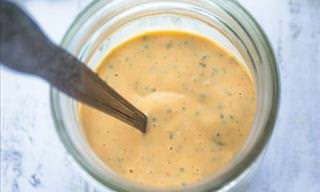
5 Easy, Homemade Sauces to Sass Up Your Favorite Food
Learn how to make these 5 delicious sauces to sass up your food.
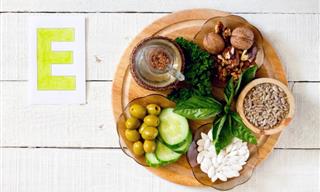
What Does Vitamin E Do, and Where Do We Get It From?
This discussion delves into eight noteworthy benefits of vitamin E, substantiated by scientific research.
 4:26
4:26
THIS is Why I Love Italian Cuisine!
What makes the Italian cuisine one of the best in the world? Watch and learn.
 11:51
11:51
6 Useful Ways to Make Eggs Last for MUCH Longer
Not only does this video teach 6 ways to preserve eggs for much longer, you also get to learn some pretty cool recipes on the way.
 9:45
9:45
These Breakfast Recipes with Canned Beans Are Genius!
Turn canned beans into delicious morning dishes with these tips.

Prepare 3 Nutritious & Filling Breakfasts in 10 Minutes
Here are three delicious breakfasts that pack all the nutrients you need and will get your day started off with a boost of energy.
 10:08
10:08
Make This Two-Ingredient Bread at Home, It's SUPER Easy
Ran out of bread or store-bought tortillas? No worries, we can help. Just make this delicious and easy-to-make Indian flatbread.
 0:44
0:44
How to Quickly Cook Pasta in a Pan
Ever cook pasta in a pan? It may sound counter-intuitive, but the resulting deliciousness is hard to dispute. You're gonna love it!
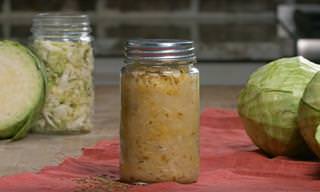
If You Like Sauerkraut, You'll Love This Recipe
Sauerkraut isn't one of the most popular foods out there, but it sure is healthy. Here's a simple recipe to teach you how to make the perfect sauerkraut!
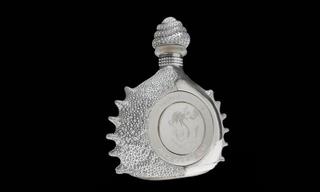
What Would You Pay For the Best Bottle of Scotch On Earth?
These incredible liquors are only available in small numbers and have been sold for extremely hefty prices exclusively for the elite
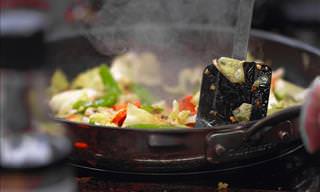
Discover How to Reheat Any Leftovers in the Optimal Way
Learn the ideal way to reheat any kind of meal with this comprehensive guide.
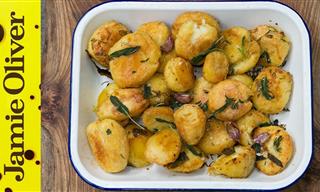 5:29
5:29
3 Delicious Recipes of Roasted Potatoes by Jamie Oliver
Here's how Jamie Oliver makes the ultimate roasted potatoes to accompany any main dish - 3 delicious ways!
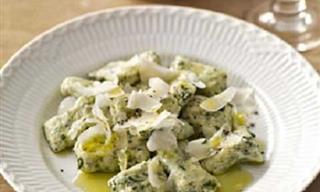
2 Authentic and Hearty Italian Recipes You've Got To Try
These are our favorite ways to prepare, savor and enjoy the best of Italian food.

12 Recipes for Sauces That You’ll Never Have to Buy Again
Sauces and spreads are a must in every kitchen, but when we buy them in the store, we buy sauces filled with preservatives. Here's how to make your own!

Love Ginger Ale? Maybe It's Time You Made Your Own...
2 easy to make recipes for organic ginger ale and ginger beer

Incredibly Delicious and Easy-To-Make Chicken Dish
A simple recipe which will leave you with mouthwatering chicken every time.

9 Creative Recipes That'll Get You Drinking More Water
There's no need to buy "flavored water" when you can easily make your own at a fraction of the cost and with far less sugar.
 7:34
7:34
Bring Variety to Your Morning With 10 Iced Coffee Drinks
Bring variety to your breakfast with these delicious and refreshing iced coffee drinks!

Cook the Juiciest Chicken Breasts Ever With This Recipe
Chicken breasts are easy to cook, but they need to be cooked properly to be enjoyed. This recipe will ensure you cook the tastiest chicken breasts imaginable.

Impress Your Guests With This Easily Made Apple Swan!
A simple and easy way to beautify any set table with beautiful little apple swans!

Maple Banana Muffins That Are Healthy as Well as Delicious
This recipe will show you how to make delicious and healthy maple-sweetened banana muffins.

A French Onion Soup to Warm Even the Coldest of Nights
This recipe will show you how to make a delicious and hearty French onion soup that'll warm even the coldest of days.

KFC's Original Fried Chicken Recipe is Finally Revealed...
Colonel Sanders' nephew reveals the original secret recipe for Kentucky Fried Chicken.

Learn Your Fish: 9 Common Types and How To Prepare Them
Do you think that choosing and cooking fish is a hassle? Let us change your mind by teaching you to distinguish between 9 fish varieties

15 Peculiar Food Combinations That People Actually Love
Take a look at these weird food combinations that sound gross but are actually quite delicious.
 1:21
1:21
Surprise Everyone By Serving Them a Cake Inside an Egg!
No one will see this coming, these eggs contain little cakes...

10 Piping Hot Soups to Keep You Warm Throughout Winter
These soups are amazingly tasty, and will keep you warm on a cold winter's day. Yet the most amazing thing is that they are all under 300 calories.

Everything You Wanted to Know About BREAD
We decided to compile all the essential articles about bread, as well as a few easy and varied bread recipes into one collection, take a look

These Peppers Are So Hot, They’ll Blow Your Mind!
Spice is great for every diet and these peppers from all over are perfect for making any dish the searing hot with only a small amount.
 5:36
5:36
This is How You Make Delicious Home-Made Hummus
Hummus is delicious, and you'll be surprised how easy it is to make your own.

This is How You Can Bake the Perfect Cookies Every Time
Want to make the perfect cookie? Well, after reading this article, you'll be able to do so every single time you bake!

This Beef Stroganoff is the Ultimate Comfort Food
This recipe will show you how to make the ultimate comfort food - beef stroganoff.

Sink Your Teeth into This Delicious, Adults-Only Cheesecake
Sink your teeth into this heavenly, adults-only Bailey's cheesecake dessert recipe. Without a doubt, this adults-only cheesecake recipe is sinfully delicious, and we guarantee that you'll love every bite!
 10:02
10:02
5 Cool and Unexpected Ways to Use Pizza Dough
Have some leftover pizza dough? Here are some neat ways to use it.
To enable your Ad-Free Subscription, please fill the fields below
Your subscription was successful, now you can enjoy an ad-free experience!!
Note: To make sure you get no ads, please make sure to log in to your account. If you are logged in already, then refresh the page. The subscription can be cancelled at any time.


